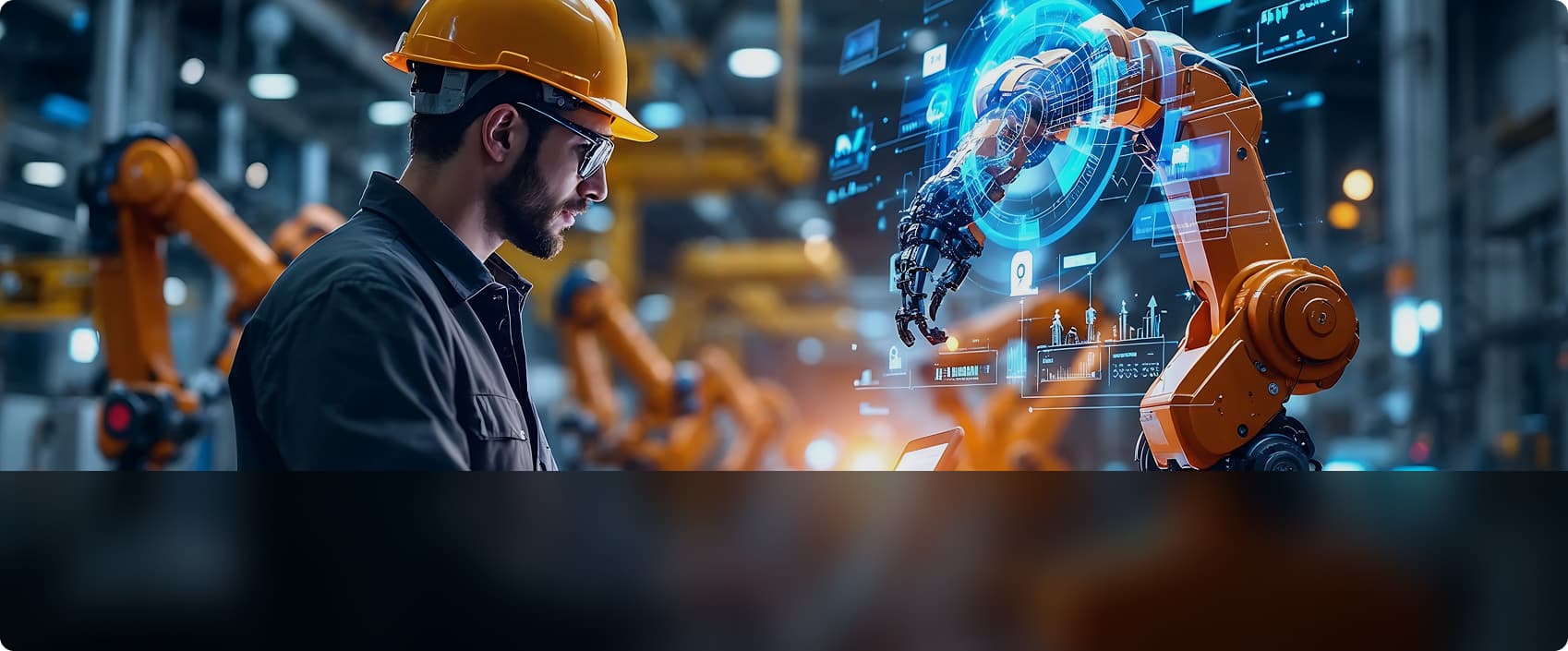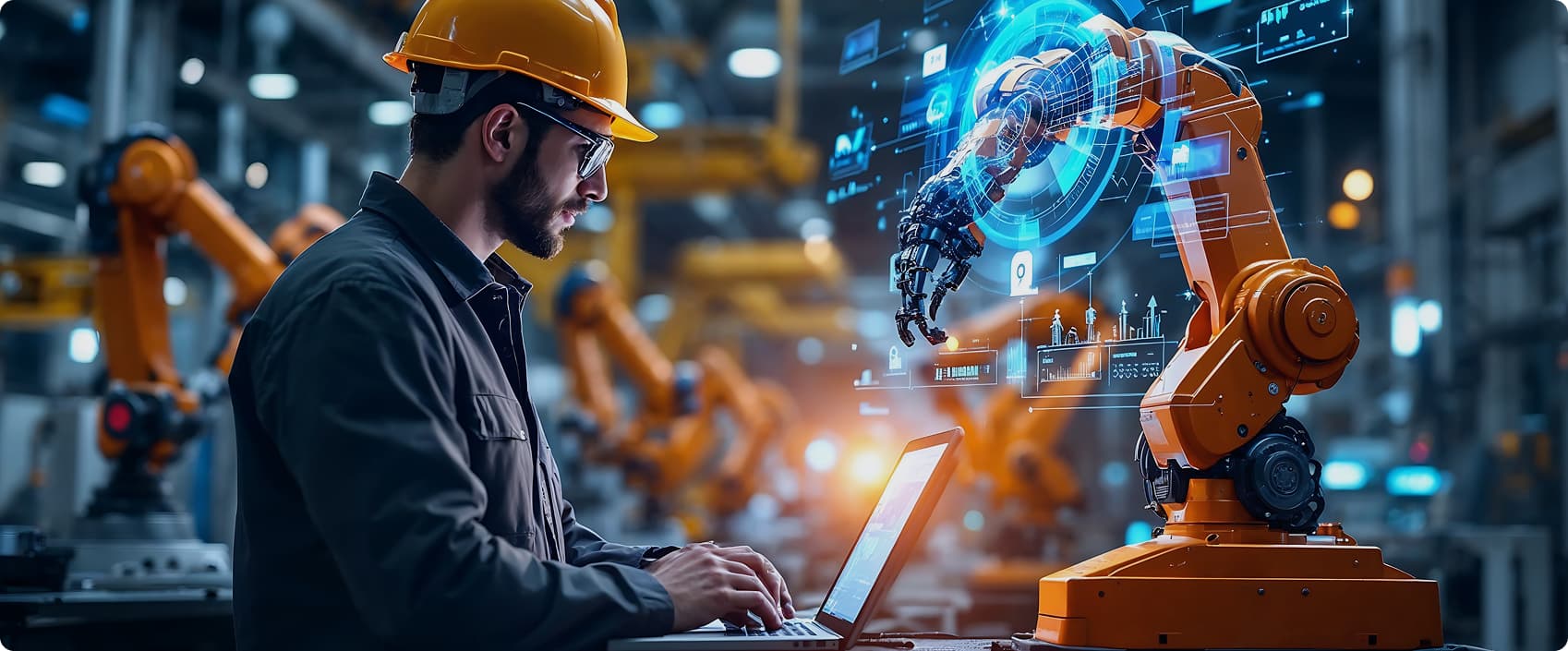Artificial Intelligence has already transformed SaaS platforms, from predictive analytics that forecast demand to generative AI that automates documentation and design. But for manufacturing SaaS, the real breakthrough lies ahead.
The next frontier is Agentic AI in manufacturing, AI systems that don’t just analyze or generate, but act. These autonomous AI agents can independently pursue defined objectives, make decisions in real time, and adapt based on feedback from their environment.
This shift holds massive potential for Manufacturing SaaS: from supply chain agility to real-time production optimization. In this blog, we’ll explore what Agentic AI is, how it’s different from existing AI models, and why it’s the next big leap for manufacturing SaaS providers.
Understanding Agentic AI: What Makes it Different?
At its core, Agentic AI refers to AI agents capable of pursuing goals without constant human intervention. Unlike traditional machine learning or generative models, which need explicit prompts or pre-set workflows, Agentic AI development can operate in a closed feedback loop, continuously sensing, deciding, acting, and learning.
Key traits of Agentic AI:
- Autonomy – Executes tasks toward defined goals without requiring step-by-step instructions.
- Memory – Remembers past interactions and outcomes to inform future decisions.
- Environment Interaction – Reads and reacts to changes in data streams, IoT sensors, or operational dashboards.
- Feedback Loops – Learns from the consequences of its actions and self-corrects over time.
For manufacturing SaaS automation, this means moving from a passive “here’s what might happen” model to a proactive “here’s what I’ve done to fix it” model.
Why Manufacturing SaaS Needs Agentic AI
Manufacturing environments are complex, dynamic, and unforgiving when it comes to downtime or inefficiency. Even the most advanced SaaS platforms today tend to operate reactively, surfacing analytics and alerts that still require manual intervention.
Key challenges manufacturing teams face:
- High variability in production schedules and resource availability
- Downtime from unexpected equipment failures
- Latency between problem detection and decision-making
- Supply chain disruptions that ripple across production timelines
Today’s SaaS tools are powerful but limited, they inform rather than act. For example, a predictive analytics dashboard can flag a potential bottleneck, but it’s up to a human operator to decide how to respond.
This is where Agentic AI bridges the gap:
- Detects issues in real time, proposes and executes corrective actions
- Adjusts workflows and supply chain logistics without waiting for human input
- Continuously learns from production outcomes to improve future performance
For AI decision-making in manufacturing, Agentic AI development is not just a feature upgrade, it’s a paradigm shift.
High-Impact Use Cases in Manufacturing SaaS
Here’s how Agentic AI for SaaS can revolutionize manufacturing operations:
Benefits Over Traditional AI Approaches
| Traditional AI | Agentic AI |
|---|---|
| Static decision-making based on fixed rules | Dynamic decision-making that adapts in real time |
| Requires batch retraining to improve accuracy | Continuously learns from new data and outcomes |
| Provides insights, leaving action to humans | Takes goal-oriented autonomous actions |
| Optimizes individual processes in isolation | Coordinates across processes for holistic optimization |
What This Means for SaaS Platforms
For Manufacturing SaaS providers, adopting Agentic AI means moving from being a passive “system of record” to becoming a system of action.
Instead of dashboards that visualize metrics, platforms can offer intelligent modules that execute optimization strategies in the background. This capability opens doors to entirely new SaaS revenue models, like outcome-based services, where clients pay based on production improvements or cost savings achieved.
Moreover, Agentic AI modules can evolve with use, becoming more accurate and impactful over time. For SaaS teams, this means long-term customer stickiness and a strong competitive moat.
Conclusion
Agentic AI in manufacturing is more than just a technological advancement, it’s the operational revolution that will define the next decade of Manufacturing SaaS. By enabling autonomous AI agents to learn, adapt, and act toward defined goals, we move from insight to impact without the delays of manual decision-making.
For Manufacturing SaaS providers, this is the leap that turns software from a helpful assistant into a proactive partner in driving efficiency, resilience, and innovation.






Your email address will not be published. Required fields are marked *